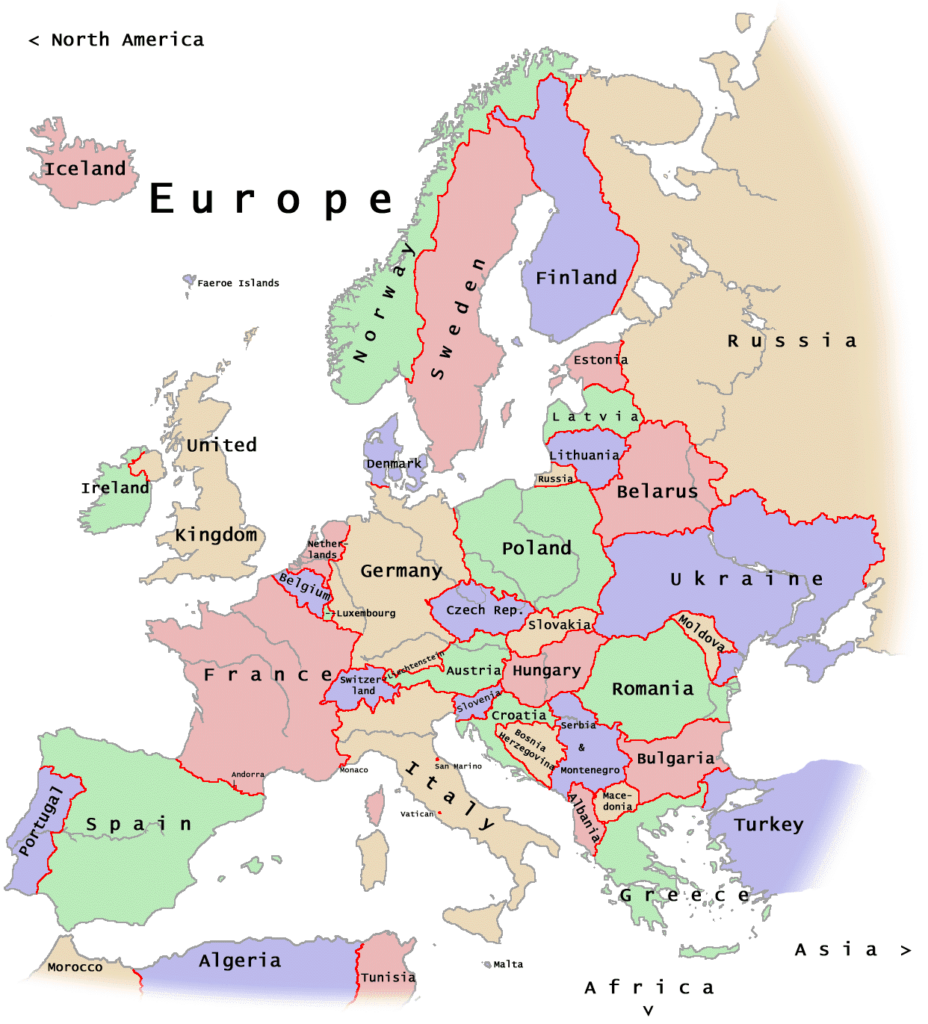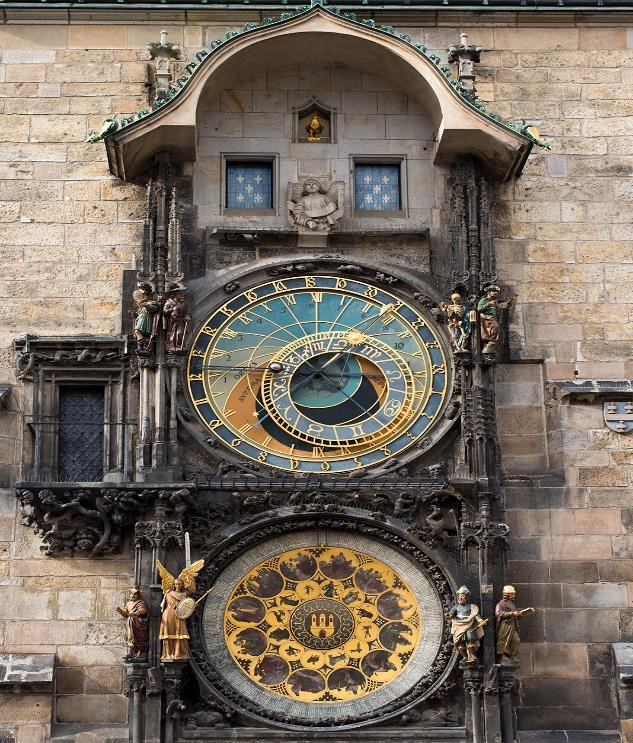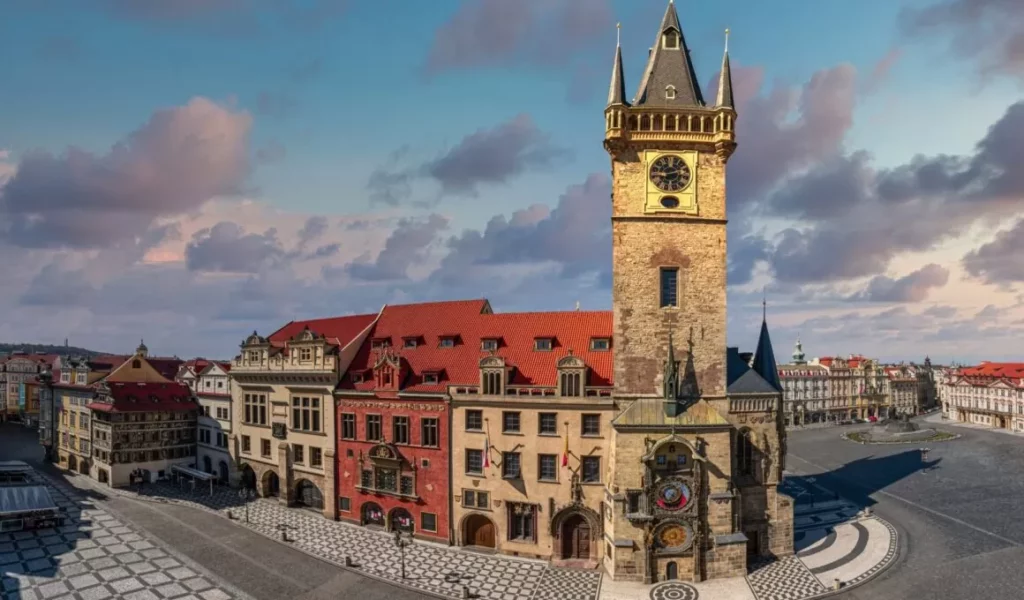Czech Republic
Grades 5+
 We are in Prague, the capital of the Czech Republic, the square of Old Town steeped in a Medieval and Baroque atmosphere. Streetlamp light barely cuts through the thick fog. Along the ancient downtown aisles and alleys, a couple move arm-in-arm, hunched over as if from the fog, talking in a hush. Their coats are long – the look of elderly Czech for whom tradition still holds sacred values. Their heels clack hollowly on the cobblestone. They join an almost silent crowd, tourists and other elderly, standing in a semi-circle beneath an old Gothic church. (4)
We are in Prague, the capital of the Czech Republic, the square of Old Town steeped in a Medieval and Baroque atmosphere. Streetlamp light barely cuts through the thick fog. Along the ancient downtown aisles and alleys, a couple move arm-in-arm, hunched over as if from the fog, talking in a hush. Their coats are long – the look of elderly Czech for whom tradition still holds sacred values. Their heels clack hollowly on the cobblestone. They join an almost silent crowd, tourists and other elderly, standing in a semi-circle beneath an old Gothic church. (4)
As the clock strikes the house, it begins to chime. Twelve figures of the apostles slowly emerge single-file from behind the clock face. They circle the clock, their movements quietly cadenced. Three times they circle the clock. Then one by one they pass behind the clock face.
Meanwhile, four figures representing sins the people of Medieval Prague particularly detested shake their heads, signifying that they are unready to leave people alone. Those are Vanity, who watches himself in a mirror; Greed, represented by a bag of gold; Lust, represented by a Turkish figure, and Death, who strikes the time. Like most great clocks in Europe, heavenly bodies such as the sun and moon also adorn the clock. (5)
There are smiles and chuckles as the clock chimes. The Czech believe that if the Walk of the Apostles does not occur, or if the clock, the Prague Orloj, stops moving for any other reason, then ill will befall the grand city. (3)
∗

 As astronomical clock does more than tell time. It also shows the relationship of sun, moon, zodiac, and the major planets. The Orloj is the third-oldest such clock in history and the oldest still in operation. A proud symbol of the city, its reassuring presence is a reminder of the city’s long history and of the people’s commitment to their heritage.
As astronomical clock does more than tell time. It also shows the relationship of sun, moon, zodiac, and the major planets. The Orloj is the third-oldest such clock in history and the oldest still in operation. A proud symbol of the city, its reassuring presence is a reminder of the city’s long history and of the people’s commitment to their heritage.
The Old Town Hall Tower was built in 1338. The tower is 56 meters tall and consists of four floors, each connected by a spiral staircase. The tower is decorated with Gothic and Renaissance-style frescoes and sculptures. The Orloj, or Prague Astronomical Clock, was installed on the tower in 1410.
Ironically, one of the times the clock stopped working was the last day of World War II. The Nazis had taken over the Czech people in 1939. When Germany surrendered on May 8, 1945, a Czech uprising occurred against Nazis remaining in Prague. The Nazis’ armored vehicles fired upon the clock in an effort to quell the uprising. The clock was so severely damaged that it was not restarted until three years later. (4)
Today, the Old Town Hall Tower is one of many spires adorning the cityscape. Prague is known as “the city of a hundred spires.” As sunlight glints off its 500 to 1000 church towers, turrets, and belfries, the result is a stunning mosaic of a history of architectural styles that portray the Czech people’s aspirations to announce their vibrant culture to the heavens. (2)
Czech Republic Activity 1
Name the parts of speech for each word in the following sentences:
- Streetlamp light barely cuts through the thick fog.
- Twelve figures of the apostles slowly emerge single-file from behind the clock face.
- Meanwhile, four figures representing sins the people of Medieval Prague particularly detested shake their heads.